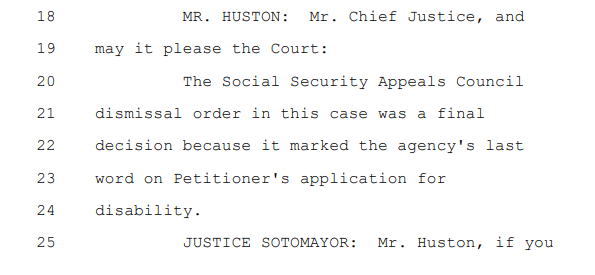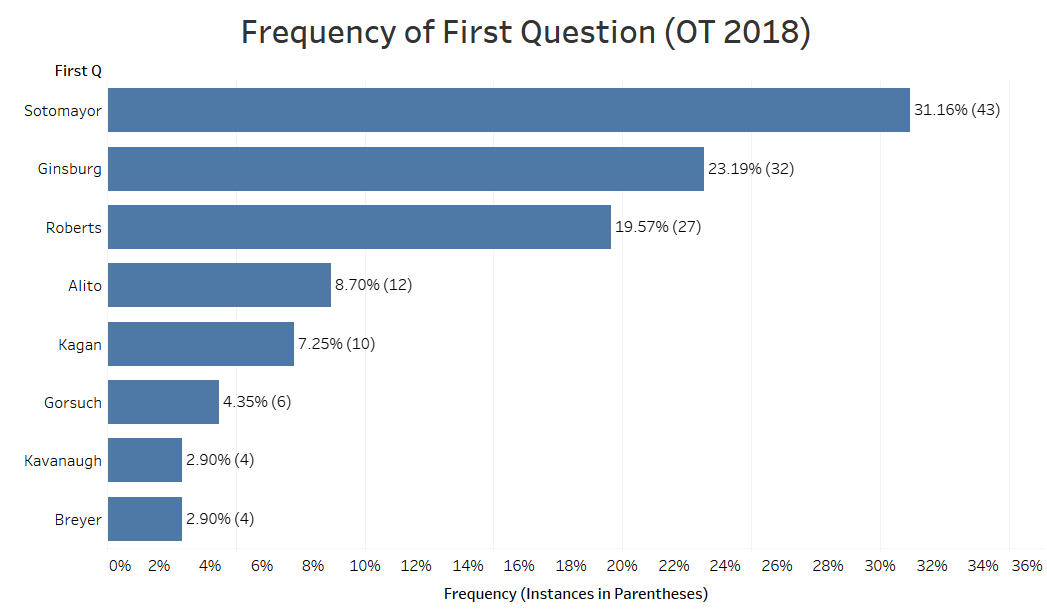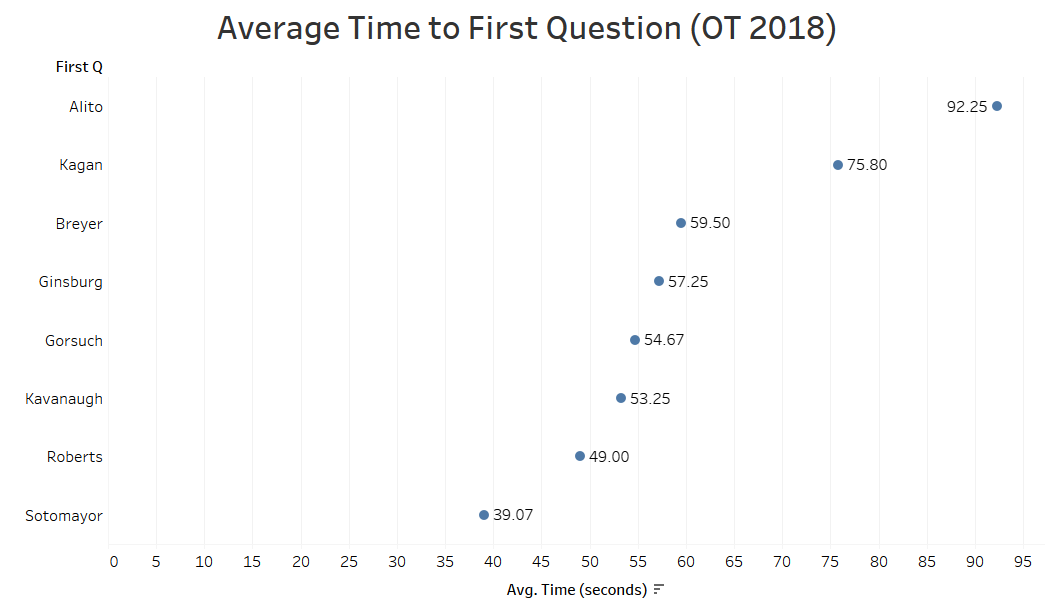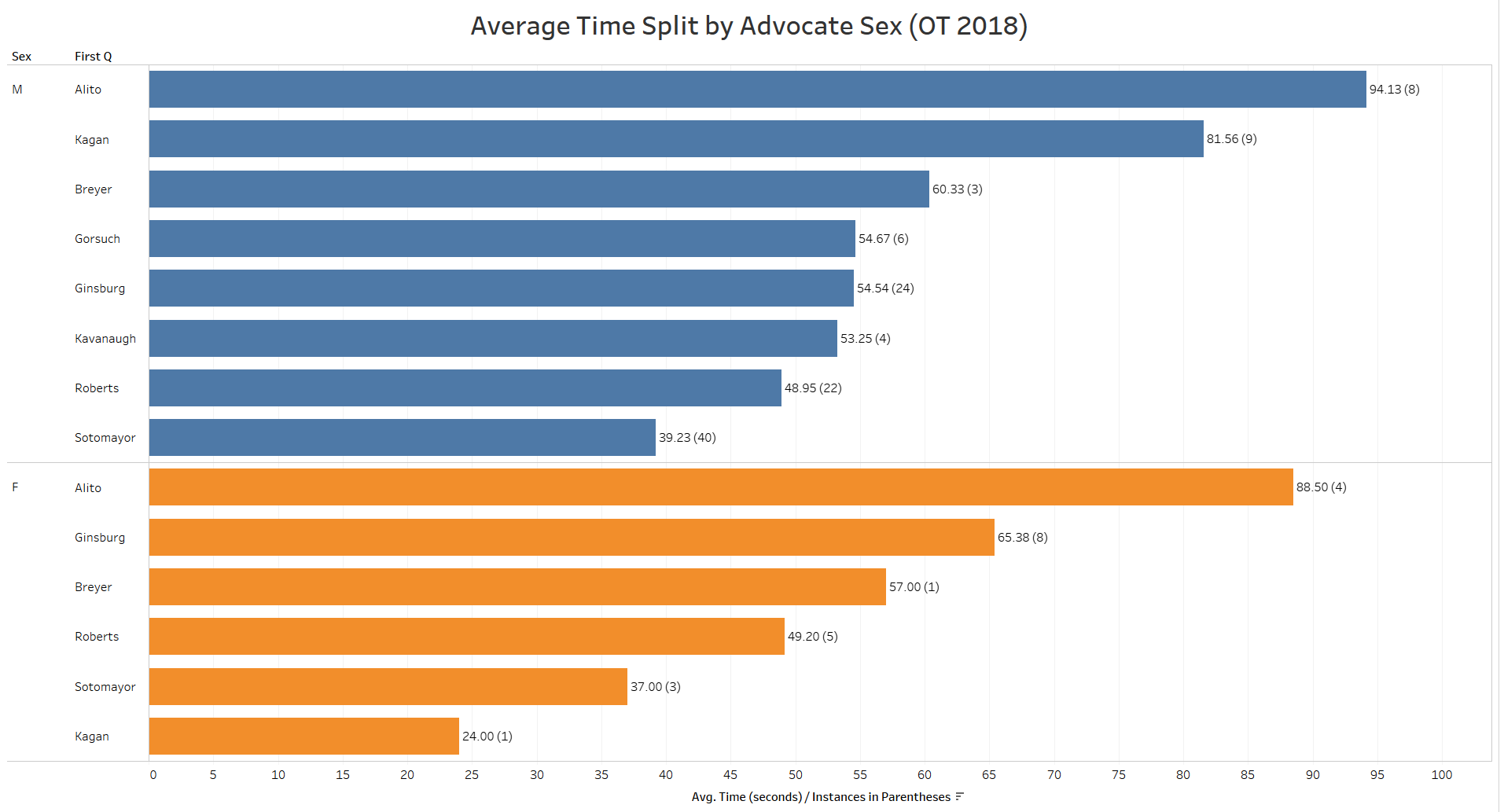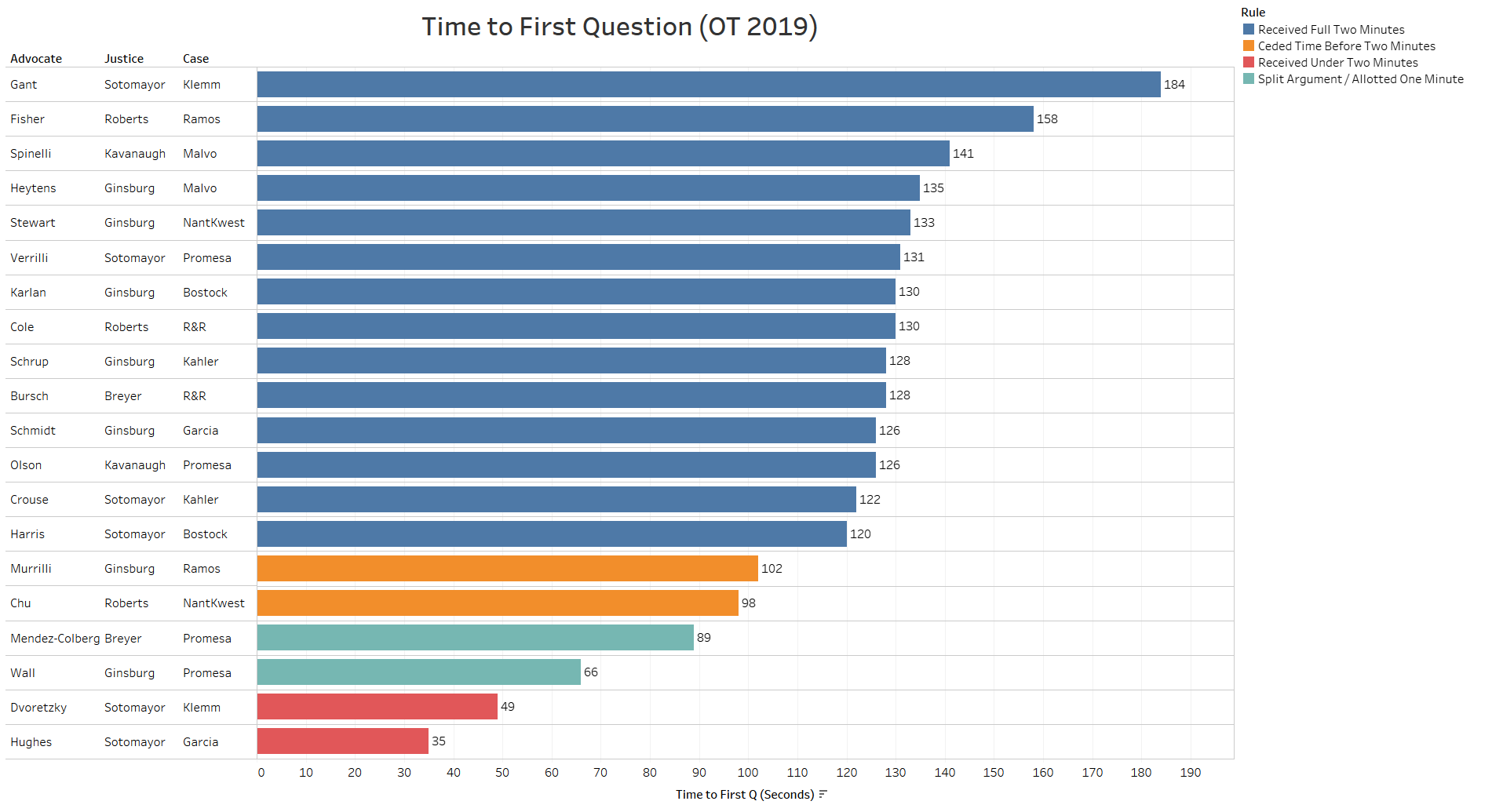Empirical SCOTUS: Is oral-argument talking time all it’s cut out to be? (UPDATED)

on Oct 21, 2019 at 2:00 pm
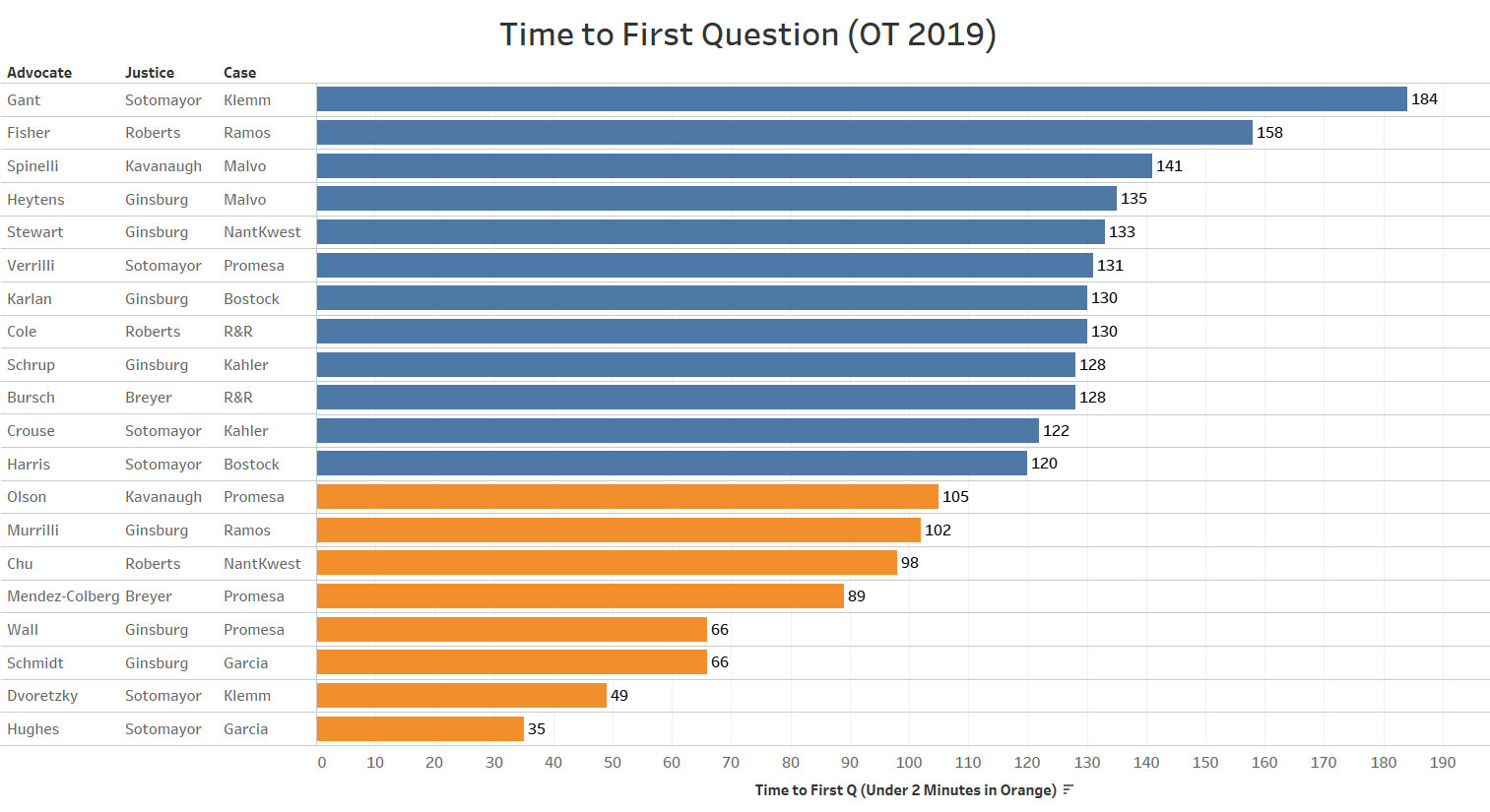
Supreme Court oral arguments are not entirely what they seem. Although at first blush they may appear to be an opportunity for attorneys to make their arguments directly to the justices, they often become occasions for the justices to test out their theories of a given case and to gauge other justices’ positions on given topics. That is one of the reasons why the justices almost always direct the flow and tenor of each argument.
Justice Stephen Breyer, for instance, is notorious for his lengthy mid-argument orations. Although attorneys still often speak more than individual justices in each argument, they generally have little time to expound on points they feel are important to the case unless these topics are of equal interest to one or more of the justices. Perhaps for this reason, new Supreme Court Guidelines state: “The Court generally will not question lead counsel for petitioners (or appellants) and respondents (or appellees) during the first two minutes of argument.” These two uninterrupted minutes of speech should give the attorneys an opportunity to make points that otherwise would be lost in the mix of the justices’ questions.
This has potential to be a drastic change from past practice. Last term, the attorney who had the shortest amount of time for opening remarks before a justice interjected was Michael Huston in Smith v. Berryhill. Huston spoke for 11 seconds before Justice Sonia Sotomayor jumped in with her first question. (Timing was measured from oral-argument recordings on Oyez.org.) This point in the transcript is shown below.
There were 33 instances last term in which a merits party’s counsel spoke for 30 seconds or less to open an argument before a justice began with questions. The average amount of speaking time for introductory remarks across the 2018 term was just over 54 seconds. Only five attorneys crossed the two-minute threshold during the term. The longest uninterrupted opening remarks were from Thomas Goldstein in Air & Liquid Systems v. Devries and Cecillia Wang in Nielsen v. Preap (Wang had the longest time to speak to open an argument, at 280 seconds.).
The justices differ in how frequently they ask the first question in oral arguments. Looking across advocates’ opening remarks, the justices’ frequencies of asking the first question are shown below.
Sotomayor led the way, asking the first question over 31 percent of the time. She was followed by Justice Ruth Bader Ginsburg, who asked the first question over 23 percent of the time, and Chief Justice John Roberts, who asked the first question just over 19.5 percent of the time. The other justices had much lower frequencies of asking the first question.
Sotomayor not only asked the first question almost a third of the time, but she was also by far the fastest justice to ask the first question on average. The justices’ average times before asking the first question (when they were the first questioner) are shown below.
At 39 seconds, Sotomayor was almost 10 seconds quicker than Roberts, the second-fastest justice to the first question. On the other end of the spectrum, Justice Elena Kagan waited almost 76 seconds on average to ask her first question when she was the first questioner, and Justice Samuel Alito averaged over 92 seconds before he jumped in first.
The distribution of the amount of time the justices took before asking the first question lends some context to explain their average rates. In the chart below, the horizontal axis shows the amount of time to the first question in 10-second intervals, while the vertical axis (for each justice) is the number of times the justice asked the first question within this time interval.
Sotomayor’s numbers are skewed to the low end, with her greatest amount of first questions in the 20- to 40-second bucket. Ginsburg also asked most of her first questions in the 20- to 40-second range, but she asked more questions than Sotomayor around the one-minute marker. Roberts also asked many early questions, but he asked the most first questions between 40 and 60 seconds into an advocate’s remarks. Kagan asked the most first questions between 60 and 80 seconds into an argument, while Alito asked the most between 80 and 100 seconds into an argument. Aside from the justices who clustered their questions at earlier points in an argument, the remaining justices have much more balanced distributions across different time intervals.
When we divide the advocates by sex, there are few noticeable differences in how the justices entered into the arguments.
Justices Neil Gorsuch and Brett Kavanaugh were never the first justices to ask questions to a female advocate. Based on the proportion of female to male advocates, Alito asked a high rate of first questions to females, although his time to the first question was at the high end for both male and female advocates. Like Alito’s, most of the justices’ averages times were appreciably similar for male and female advocates. Because Kagan only asked a first question to a female advocate once, her 24-second average is not particularly meaningful. Sotomayor appeared less apt to ask first questions to female advocates as well, with 40 first questions to male advocates compared to only three to female advocates.
So far in 2019, the two-minute waiting principle has played out more as an aspiration than as a rule.
Sotomayor stymied advocates from reaching the two-minute marker in their opening remarks twice so far this term. Twice advocates did not make it to the two-minute marker on their own accords. Although the justices may seek to offer advocates more time to give uninterrupted remarks at the beginning of each argument, more work will need to be done before this intention becomes a consistent reality.
This post has been corrected to reflect accurate data for the number of arguments in which advocates did not speak uninterrupted for the entire opening portion allocated to them by a new Supreme Court guidance.
This post was originally published at Empirical SCOTUS.



